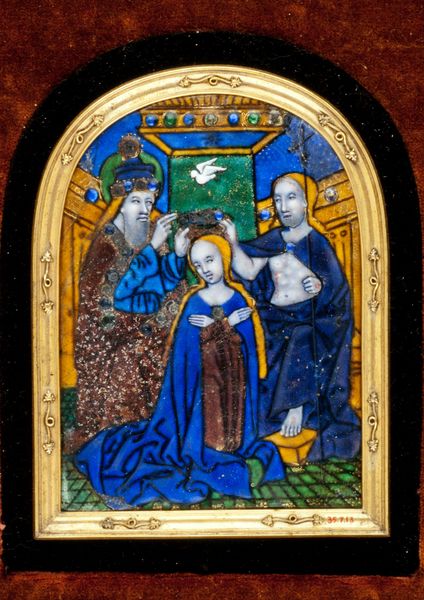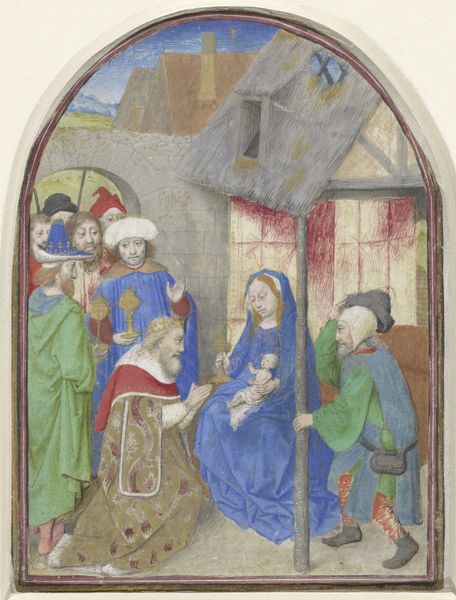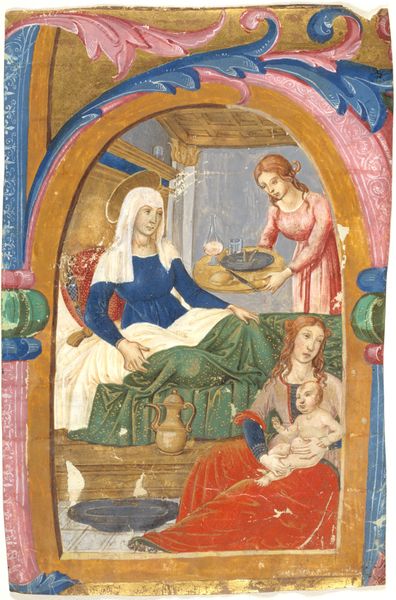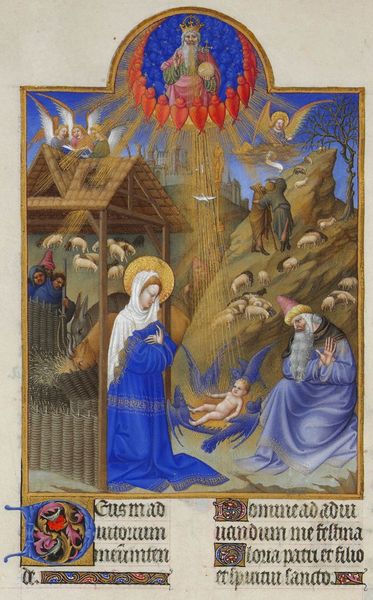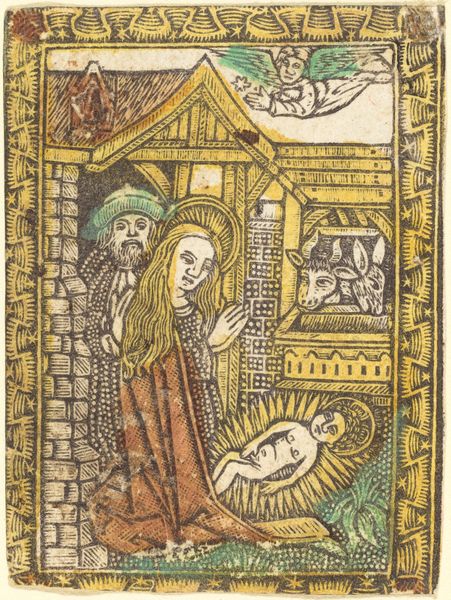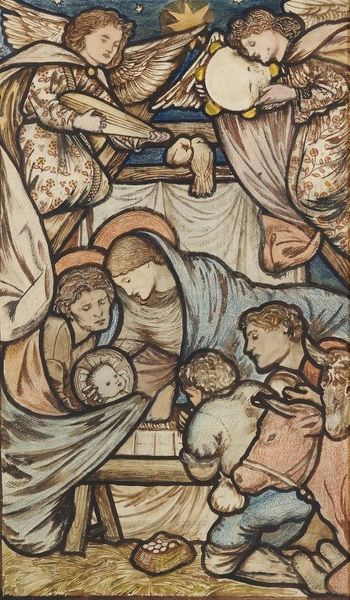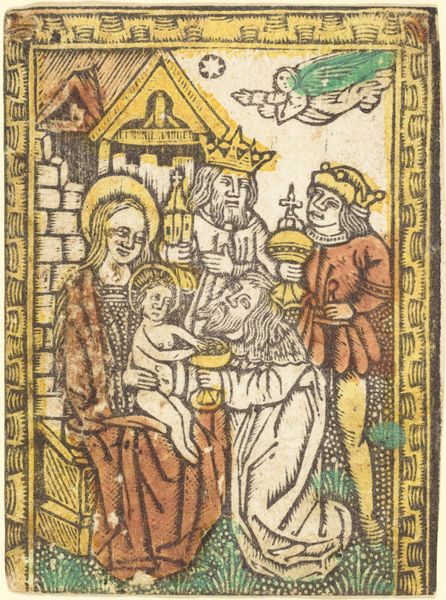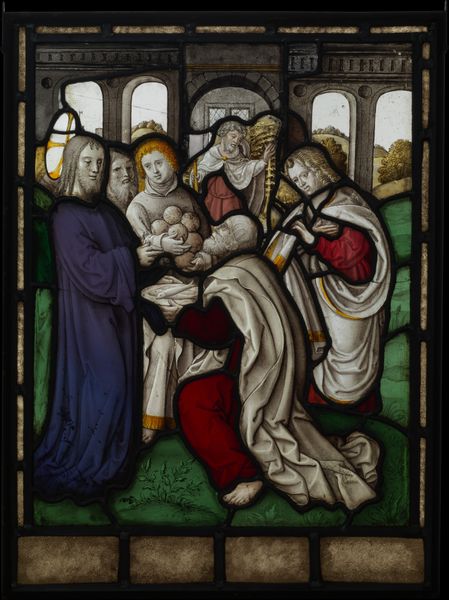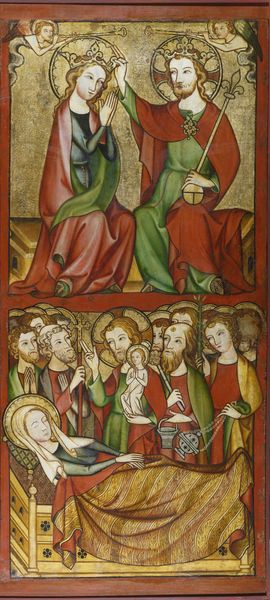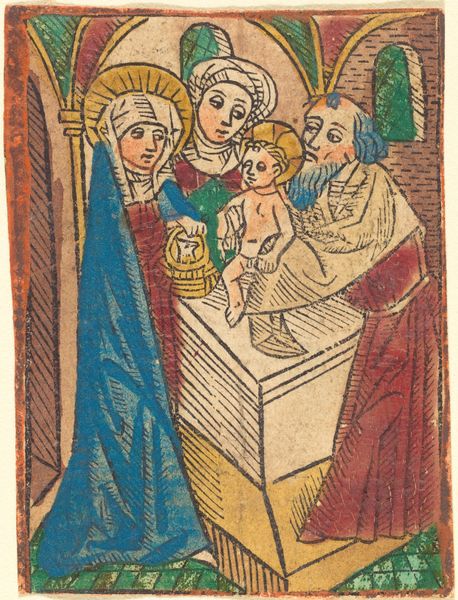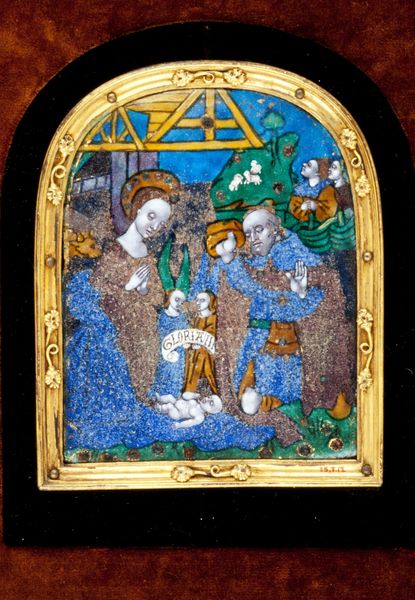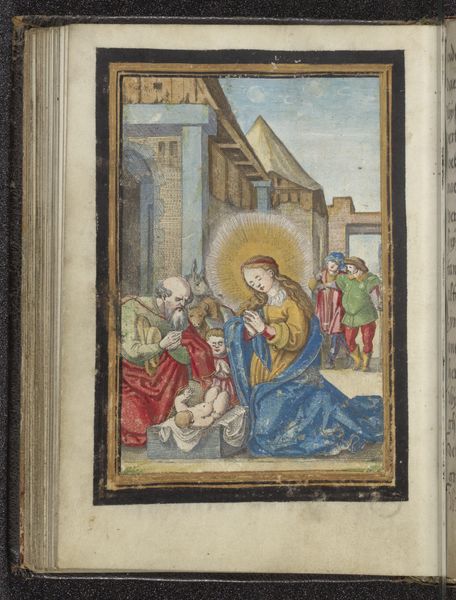
tempera, painting
#
medieval
#
narrative-art
#
tempera
#
painting
#
figuration
#
naive art
#
history-painting
#
mixed medium
#
medieval-art
#
miniature
Dimensions: Overall: 4 5/16 x 3 1/4 x 1/16 in. (10.9 x 8.2 x 0.1 cm)
Copyright: Public Domain
Curator: This plaque, dating from the 15th century, depicts the Adoration of the Shepherds and is part of the collection at the Metropolitan Museum of Art. The anonymous artist worked primarily with tempera and seems to have integrated mixed media techniques. Editor: There’s an undeniable dreamlike quality here, even if it feels structurally a little…naive. The use of color seems symbolic rather than naturalistic, contributing to the overall otherworldly mood. Curator: It is, perhaps, in its supposed naivete that the real genius lies; such characterizations disregard the socio-economic context of the artists, likely from workshops with specific production practices catering to religious institutions or wealthy patrons. We must consider the systems of apprenticeship and divisions of labor shaping its creation. Editor: I concede that the execution's context is invaluable, but I can’t ignore the formal aspects of the artwork itself. Consider how the artist balances the composition with the central placement of the Virgin Mary, creating an anchor for our eyes while the rest of the figures orbit around her, establishing visual harmony and the picture’s structural center of gravity. Curator: Precisely. The artist, and likely workshop collaborators, strategically employed locally available pigments derived from the earth. Furthermore, note the texture of the medium; these choices weren't accidental but practical considerations within their material circumstances. The use of mixed media likely implies an effort to manage resources available, and achieve greater artistic ends, a fusion of 'high art' with pragmatic craftwork. Editor: Looking closely, I find how each individual character reacts; the faces of the shepherds and angels evoke wonder, setting a peaceful, reflective tone throughout. The figures guide us and enhance the piece’s narrative strength. Curator: Indeed, while appreciating these nuances, let's remember the role patrons played. Such narrative-focused devotional objects like this were typically commissioned to reaffirm religious doctrines. The "Adoration" scene reinforced faith for ordinary people, demonstrating religious ideas made accessible by art production to medieval communities. Editor: True; context illuminates so much more than just line and color. However, I’ll maintain my belief in the formal elements' importance too; it all matters. Curator: Agreed. Analyzing this plaque requires that we think materially, socially and formally to see a glimpse into 15th-century making. Editor: And with such a multilayered interpretation, the quiet beauty of this plaque comes sharply into focus.
Comments
No comments
Be the first to comment and join the conversation on the ultimate creative platform.
